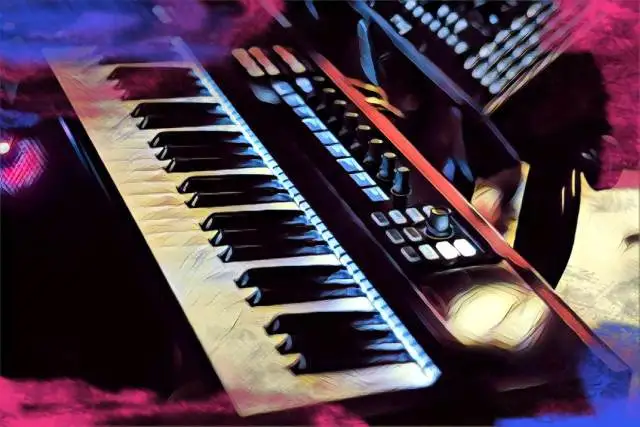To say that synthesizers have shaped the history of music of the past 50 years is not an understatement. This 20th century musical instrument has indeed empowered generations of electronic music pioneers, but also opened up a universe of sounds for artists of all levels.
Roughly 100 years after the invention of the Theremin and the Ondes Martenot, electronic instruments are still the bread and butter of countless artists, working in the fields of EDM, hip-hop, pop, rock, experimental music and beyond. In the intervening century, we went from monophonic to polyphonic synth models, from analog to digital, and from room-sized modular synths to virtual instruments: an ecosystem of new sounds in the hands of visionary creatives!
Synths allow artists to experiment with sounds unlike any other traditional instruments, which is what makes them so popular to this day. Understanding how synthesizers work is a crucial step if you want to craft a unique sound signature, so today’s article is all about synthesizers: what they are, how they evolved, how they operate, and how to create unique sounds using them.
A Definition of Synthesizers and Synthesis
It should be obvious that synths are not acoustic instruments.
Traditional instruments create sound through vibrations, each with its own unique wave pattern and timbre. When it comes to synths, the air movement is replaced by artificially-generated signals.
Unlike acoustic instruments, synthesizers use electrical signals to create sounds, and they do so by using various types of digital sound synthesis processes. This form of digital processing brings to life an artificial audible signal that might emulate acoustic instruments, or be a totally unique instrument.
Digital sound synthesis involves generating sound waves using electronic signals, which are then converted into audible sound waves through instruments, headphones or loudspeakers.
As you can imagine, musicians working with synths soon realized that they had the flexibility to manipulate and shape the sound in ways that were not possible with acoustic instruments. This level of control over the sound opened up a wide range of creative possibilities for musicians and producers across genres, who started exploring new sonic landscapes.
A Brief History of Synthesizers
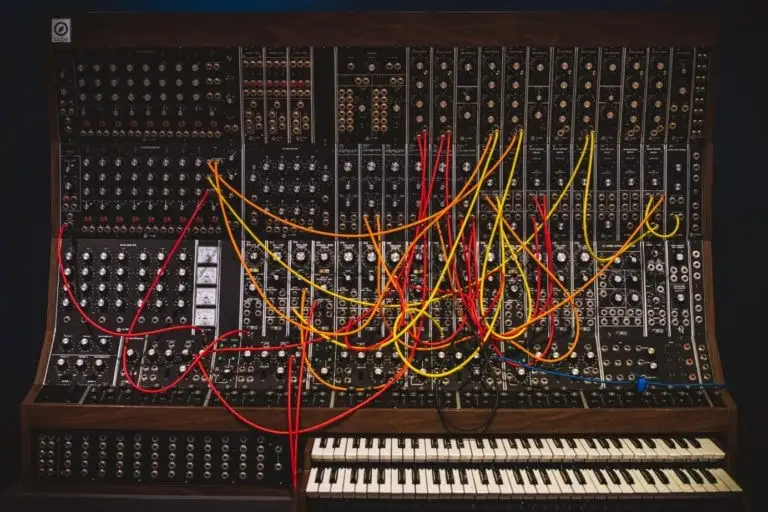
The story of synthesizers is a celebration of ambitious composers and engineers who, starting from the late 19th century, saw the potential of harnessing electricity to create new music. In particular, Cahill's Telharmonium (1897) and Léon Theremin’s namesake instrument (1928) are considered early precursors to modern-day synthesizers.
In 1956, the RCA Mark II became the first programmable electronic instrument, with a music sequencer, tone oscillators, and a four-note variable polyphony to generate sound. However, it was also quite immense compared to the more portable devices we’re used to these days (three tons, 7 feet tall and 20 feet wide).
The real change happened in the 1960s with the Moog synthesizers. Moog's design used voltage control to adjust parameters like pitch and timbre, making it more versatile and easier to use than previous models. The Minimoog, released in 1970, further popularized synthesizers thanks to an affordable price, extreme portability, and unique sound. The tiny Moog synthesizer became an instant classic across genres, from funk to prog rock, krautrock and disco.
Digital technology revolutionized once again the world of audio synthesis in the 1980s, with the introduction of DSP, or digital signal processing. A few examples: the Yamaha DX7 became the best-selling synthesizer with over 160.000 copies sold, the Fairlight CMI was a de facto precursor to digital audio workstations, and the Roland Jupiter-8 became legendary thanks to its limited release (2000 copies were made) and popularity in the pop industry (Michael Jackson, Queen, Duran Duran, among others).
Since the 2000s, with the evolution of DAWs and digital technology, iconic synthesizers have been turned into software and plugins, making them more affordable and portable than ever.
Nevertheless, modern producers still look for the unique warmth and character of analog synthesizers, which saw a resurgence in popularity in recent years, with legendary manufacturers releasing updated versions of their models, and new producers creating unique models that blend analog sounds and modern workflow.
The Types of Synthesis
There are six main types of synthesis you can come across these days, each defined by how it manipulates sounds.
Additive Synthesis
Additive synthesis creates complex sounds by combining simple waveforms.
By adjusting the amplitude and frequency of these waveforms, you can create an endless variety of sound textures and harmonics content to enhance your fundamental frequency.
This method is great because it gives you full control over the sonic characteristics of the instrument you're creating, and allows you to craft entirely unique sonic content based on a combination of basic waveforms.
Subtractive Synthesis
Subtractive synthesis removes frequencies from a harmonically complex sound wave using filters, such as low-pass (removes high frequencies), high-pass (removes low frequencies), band-pass (isolates a band of frequencies), and notch (removes a band of frequencies).
This process has become popular because it's quite intuitive and can help create a vast array of sounds.
Modular Synthesis
Modular synthesis is how it all started. This process involves connecting various independent modules, each performing a specific task, to create and manipulate sound.
The synthesizer building blocks include oscillators, filters, envelopes, LFOs, sequencers, and more, and you connect them using patch cables. Nowadays, I see modular synthesizers mostly used in experimental and generative music fields, where artists can create complex sound designs and modulation routings and make music out of them.
We'll talk more about this hands-on approach to synthesis in the next section.
Granular Synthesis
Granular synthesis breaks down a sound into tiny segments, around 1-100 milliseconds in length, that can be played back in different ways—individually, layered, or overlapped—to create new sounds.
You can change the playback speed, pitch, position, and density of the grains, to produce a wide range of textures, which can lead to fantastic results when transforming samples or creating evolving soundscapes.
Wavetable Synthesis
Wavetable synthesis is a sort of compromise between the rich harmonic content of subtractive synthesis and the precision of additive synthesis.
It generates sound by using a series of pre-recorded waveforms stored in tables, each containing multiple waveforms that can be adjusted, allowing you to create constantly evolving timbres.
Scanning through the wavetable at different speeds and directions can create a vast array of synth sounds, from static tones to articulated textures.
FM Synthesis
Frequency Modulation synthesis generates sound by modulating the frequency of one waveform (the carrier) with another waveform (the modulator) at audio rates.
This blend of waveforms produces complex harmonic and inharmonic content hard to achieve with other synthesis methods. It also produces bright and metallic sounds that make it perfect for emulating certain acoustic instruments (especially brass).
It became widely popular with the release of the Yamaha DX7 in 1983.
Analog, Digital, And Software Synthesizers: How Do They Look
The evolution of synths since the early hardware synths has been relentless, to the point that now you have a plethora of options to choose from when entering the world of sound synthesis.
The first thing to consider is the type of technology you want to use for your production: you can go full-analog with modular synthesizers, get a more intuitive digital synth, or expand your sonic palette with a more affordable virtual synth.
Let’s take a look at each technology.
Analog Manipulation (Modular)
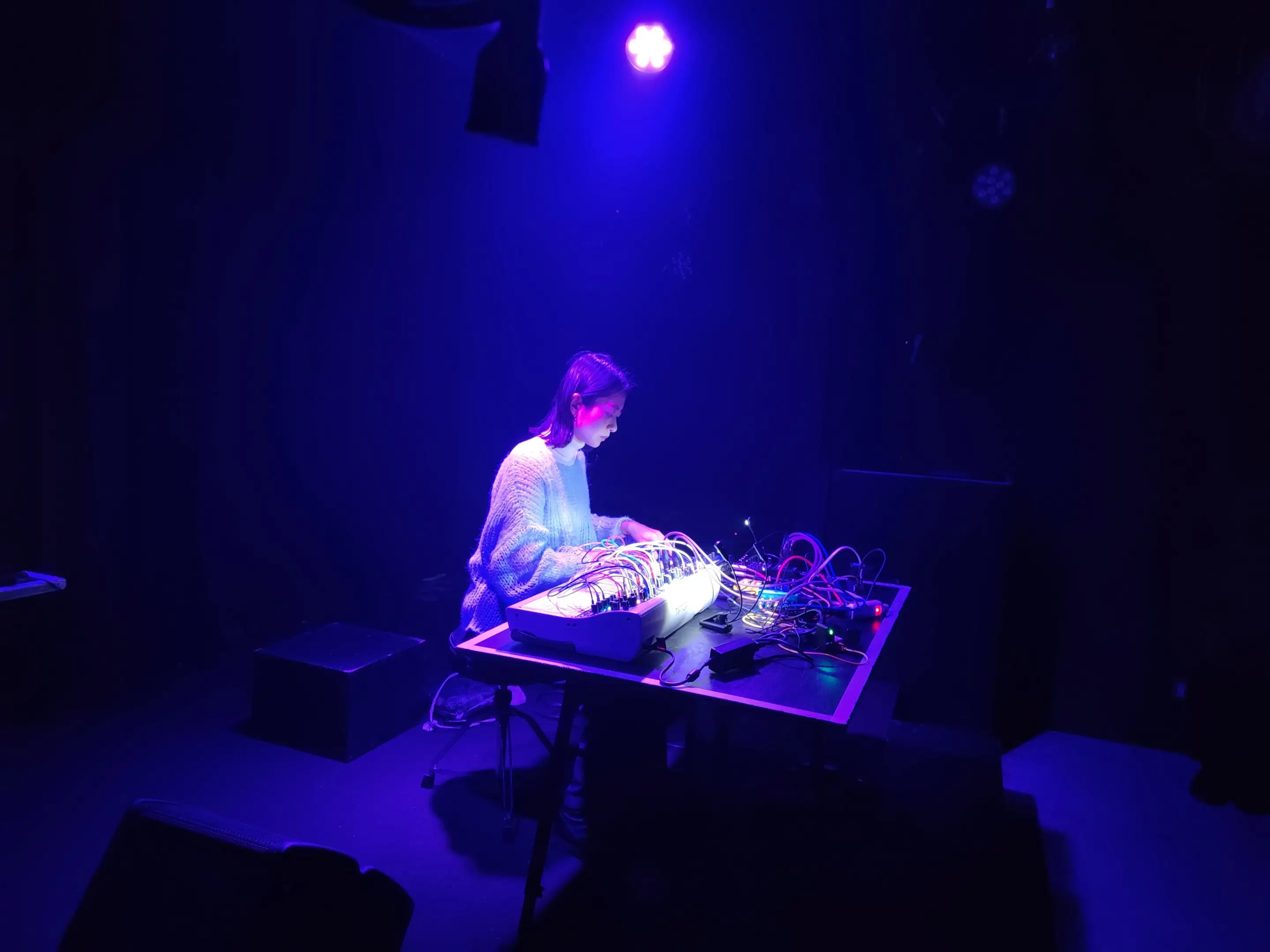
This is how early synths were made, and still one of the best ways to create a unique sound signature. Modular synthesizers come with separate modules that can be connected in endless ways to create a one-of-a-kind instrument.
Each module performs a task, whether it’s generating oscillations (oscillators), shaping sound waves (filters), or controlling the amplitude (amplifiers). You can craft a new sound by patching cables between them, hence the term "analog manipulation."
The fact that you can mix and match components, as well as the physicality involved in creating music, make analog synths widely popular to this day, especially among experimental producers and those looking for a warm, analog sound.
Digital Manipulation
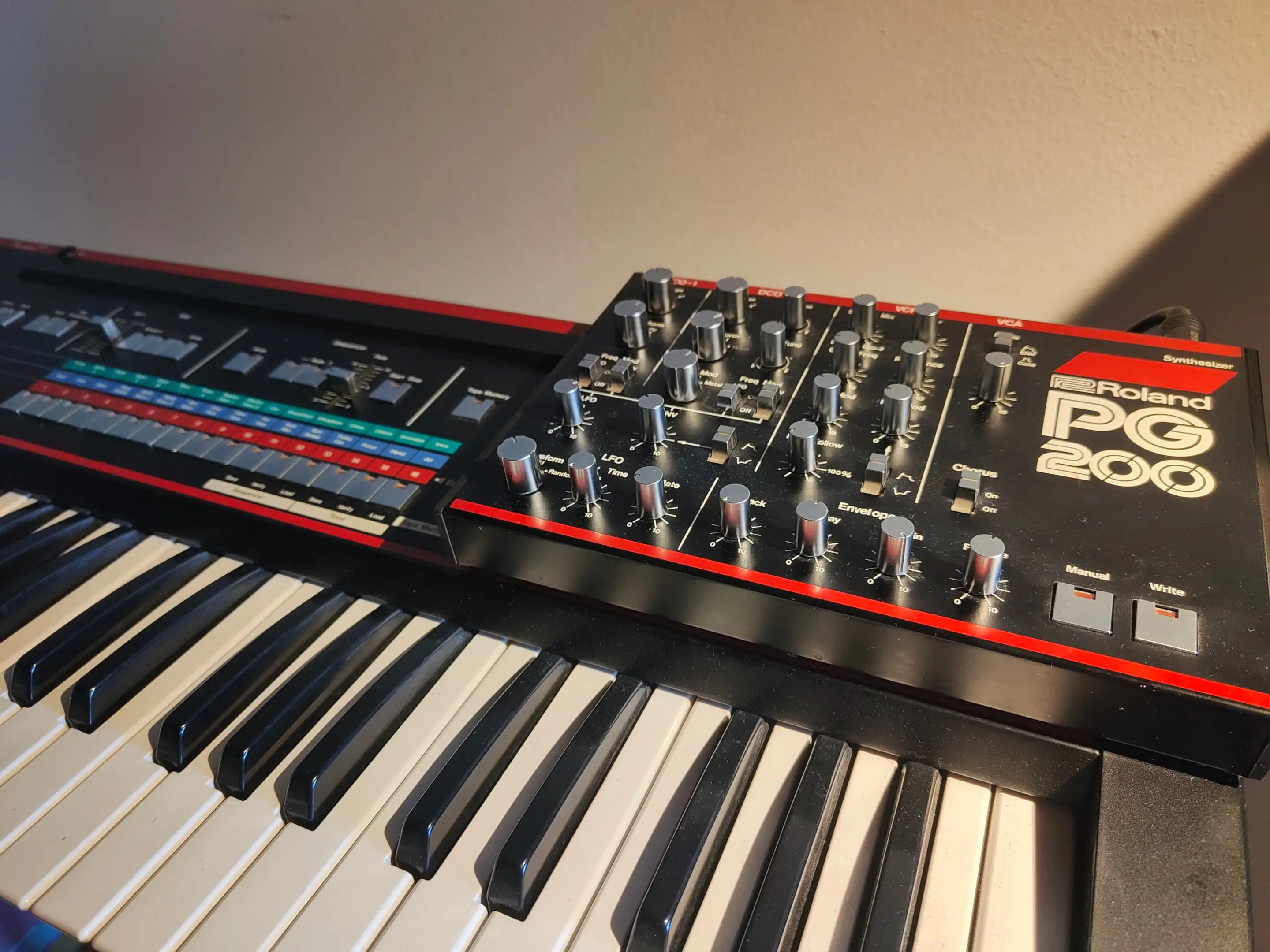
Digital synths were the next step in the evolution of these instruments, and came with features that greatly expanded their potential.
Digital manipulation is made possible by digital processors and computer algorithms that can generate and edit sounds. Unlike their analog counterparts, digital synthesizers use numerical values to represent sound waves.
When they became popular in the 80s, digital synthesizers introduced new features like polyphony and memory banks. Plus, the digital interface featured in a digital synthesizer offered more control over sounds, making them easier to use both in recording studios and live than modular synths.
Software Manipulation (VST synths)

VST synths are one of the many outcomes of modern digital music production. VST synthesizers run on your computer, whether as a standalone software or plugin in your DAW, and you can control them using a dedicated MIDI controller.
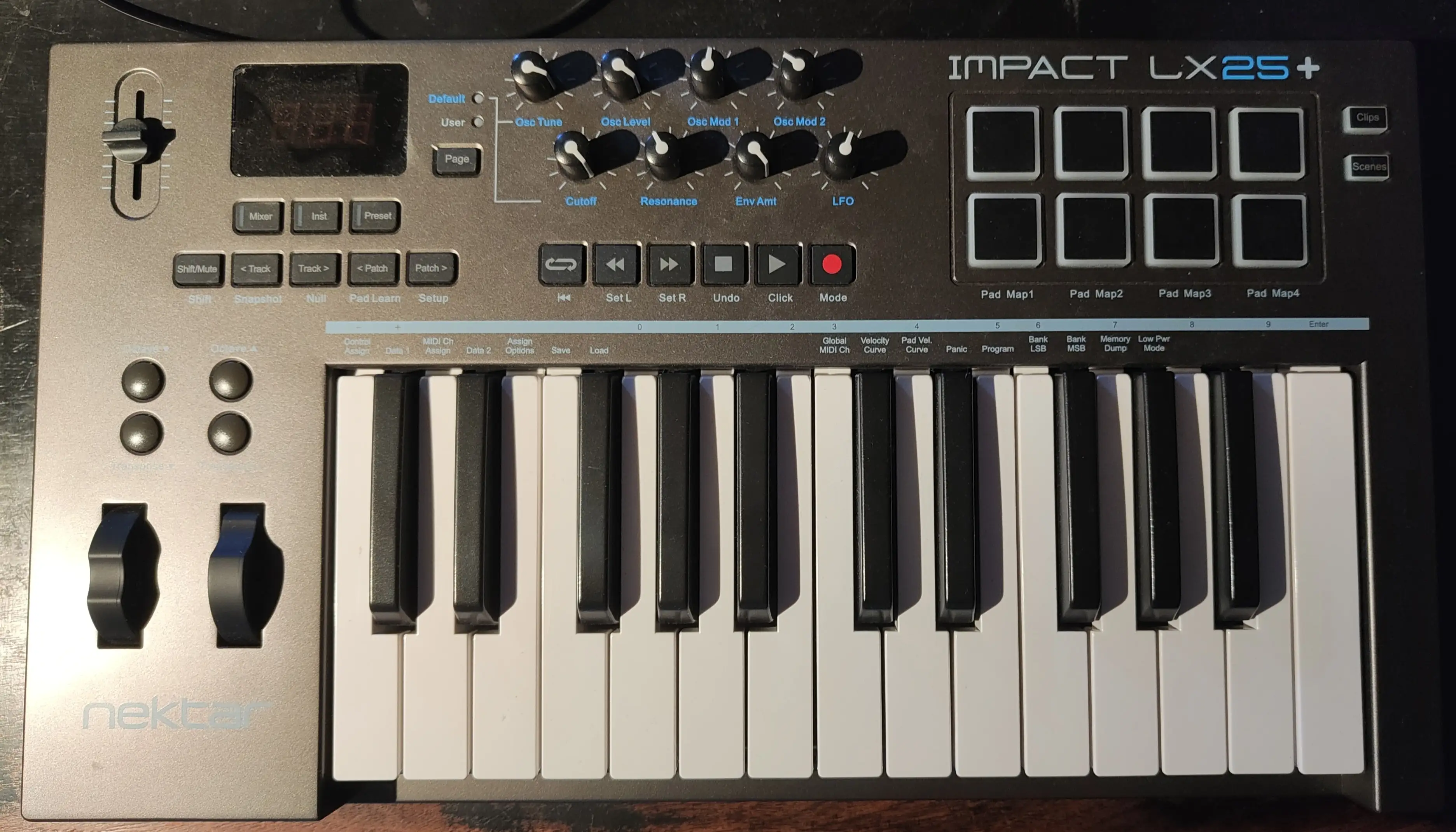
These virtual synths can be either emulations of old gear or entirely new musical instruments. They come with the same modules you’ll find in their physical counterparts.
The advantages of software synths are many. Thanks to the MIDI technology (Musical Instrument Digital Interface), you can manipulate audio even after you have recorded the audio track: you can change all sound settings and even replace the virtual synth with a different one, all without losing your audio data.
VST synths tend to be quite affordable, or even free; this, and the fact they occupy zero physical space, means that you can create a sound library with dozens of synthesizers to choose from, endlessly expanding your sonic palette.
How To Use a Synth
In the next part, we’ll look at how synths work. They’re all different, but most share the same modules, meaning they have similar ways of manipulating waveforms.
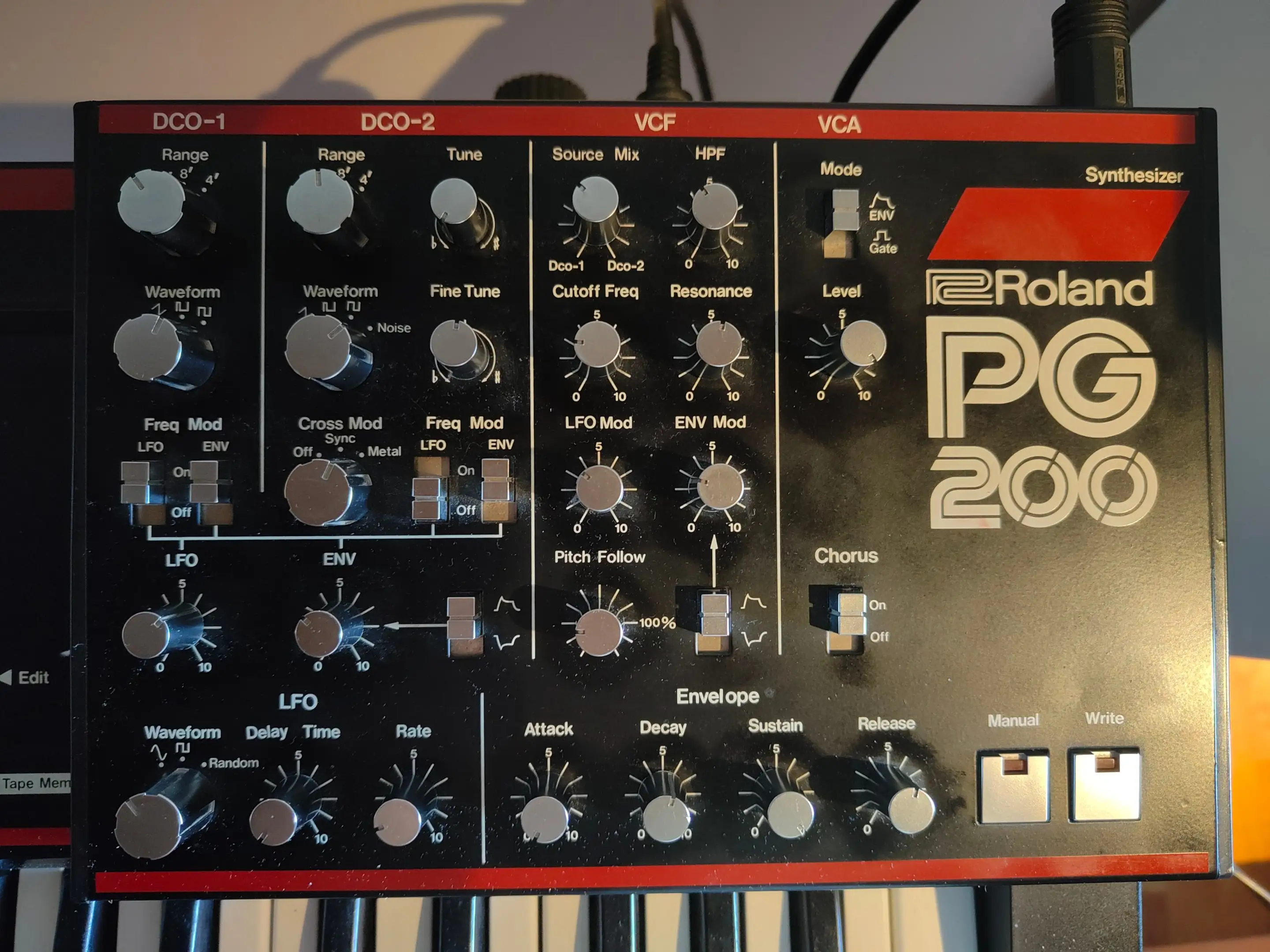
Oscillators
Oscillators are the heart of any synthesizer, generating the raw sound waves that form the basis of your patches. They produce various waveforms, each with a distinct sound character.
The most common waveforms are sine wave , square wave , sawtooth wave , and triangle wave .
In general, sine waves are smooth and pure, and give out a clean tone. Square waves are hollow and buzzy, which makes them great for rhythmic sections. Sawtooth waves are bright and rich, so they're great for strings and brass sounds. Finally, triangle waves are similar to sine waves but with a bit more harmonic content, making them slightly brighter.
By adjusting the pitch and waveform type of the oscillators, you can craft the fundamental tone of your final sound. Many synthesizers allow you to use multiple oscillators simultaneously, detuning them slightly from each other to create a richer sound.
LFOs
Low-Frequency Oscillators (LFOs) are used to modulate other parameters within the synthesizer, adding movement and complexity to your sounds. Unlike regular oscillators, which operate in the audible range, LFOs oscillate at much lower frequencies, typically below 20 Hz.
This makes their effects more perceptible as changes in modulation rather than as a tone. A low-frequency oscillator can modulate various parameters such as pitch (vibrato), amplitude (tremolo), filter cutoff (wah-wah effects), and even other LFOs for more complex modulation patterns. By adjusting the waveform, rate, and depth of the low-frequency oscillator, you can create anything from subtle vibrato effects to rhythmic modulations.
ADSR envelopes
ADSR envelopes (Attack, Decay, Sustain, and Release) define how a synthesizer's sound changes over time from the moment a key is pressed to when it’s released. Each stage of the envelope affects a different aspect of the sound:
- Attack: The time it takes for the sound to reach its maximum level after the key is pressed. A short attack equals an immediate sound, while a long attack creates a gradual fade-in.
- Decay: The time it takes for the sound to drop from the maximum level to the sustain level after the initial attack.
- Sustain: The level at which the sound remains while the key is pressed.
- Release: The time it takes for the sound to fade out after the key is released.
Filters
Filters shape the harmonic content of the sound by attenuating certain frequencies. The most common type is the low-pass filter, which allows frequencies below a certain cutoff point to pass through while reducing the amplitudes of frequencies above that point.
This can make a sound darker or more muted. High-pass filters do the opposite, removing low frequencies and allowing higher ones to pass, which can make a sound thinner or more cutting. Band-pass filters allow frequencies within a specific range to pass through, useful for creating resonant, focused sounds.
Filters often have a resonance control, which boosts the frequencies around the cutoff point, adding a distinctive peak that can create a more pronounced, squelchy sound. By automating the filter cutoff and resonance parameters, you can achieve dynamic and evolving timbres.
Put it all into practice: How to make music with synths
After all this theory, you're probably so overwhelmed that just the idea of touching a synth might feel repulsive to you. If that's the case, don't worry: it's a lot to take in. So the final section of this piece delves deeper into the practical side, hopefully giving you advice on how to create your first sounds and melodies with a synth.
Once again, the process changes drastically depending on whether you're using a modular, digital, or virtual synthesizer, so take these suggestions merely as a way to get started in the world of synthesis. Crafting new synth sounds requires a deep understanding of the instrument you chose, so once you do choose one, make sure you do your research and practice relentlessly.
Choosing the Right Synthesizer
Well, how do you choose a synth, given the abundance of hardware and software synths available right now? By taking into account factors such as: your budget, the genres you like, the space available in your home/recording studio, and how tech-savvy you are.
All in all, there are two main paths: hardware synths or virtual synths, and both options have pros and cons.
Analog and digital synths offer a more hands-on approach to sound design, look better on stage, and sound timeless. On the other hand, they're harder to record at home (high-level noise, difficulty in keeping the right tempo without quantizing, etc.), and they're fragile and expensive.
VST plugins are more affordable and easier to use. You can have as many as you like as they don't take up physical space, and you can control all of them through a MIDI keyboard. The downside is that the creative process can feel colder and more in the hands of the software than in yours.
If you're just getting started, my suggestion is to explore virtual synths first, unless you can get your hands on a great analog synthesizer without spending a fortune. VST plugins can help you craft your sound signature, understand what you need from a synth, and prepare you, eventually, for an analog upgrade whenever you're ready.
Familiarize Yourself with the Interface
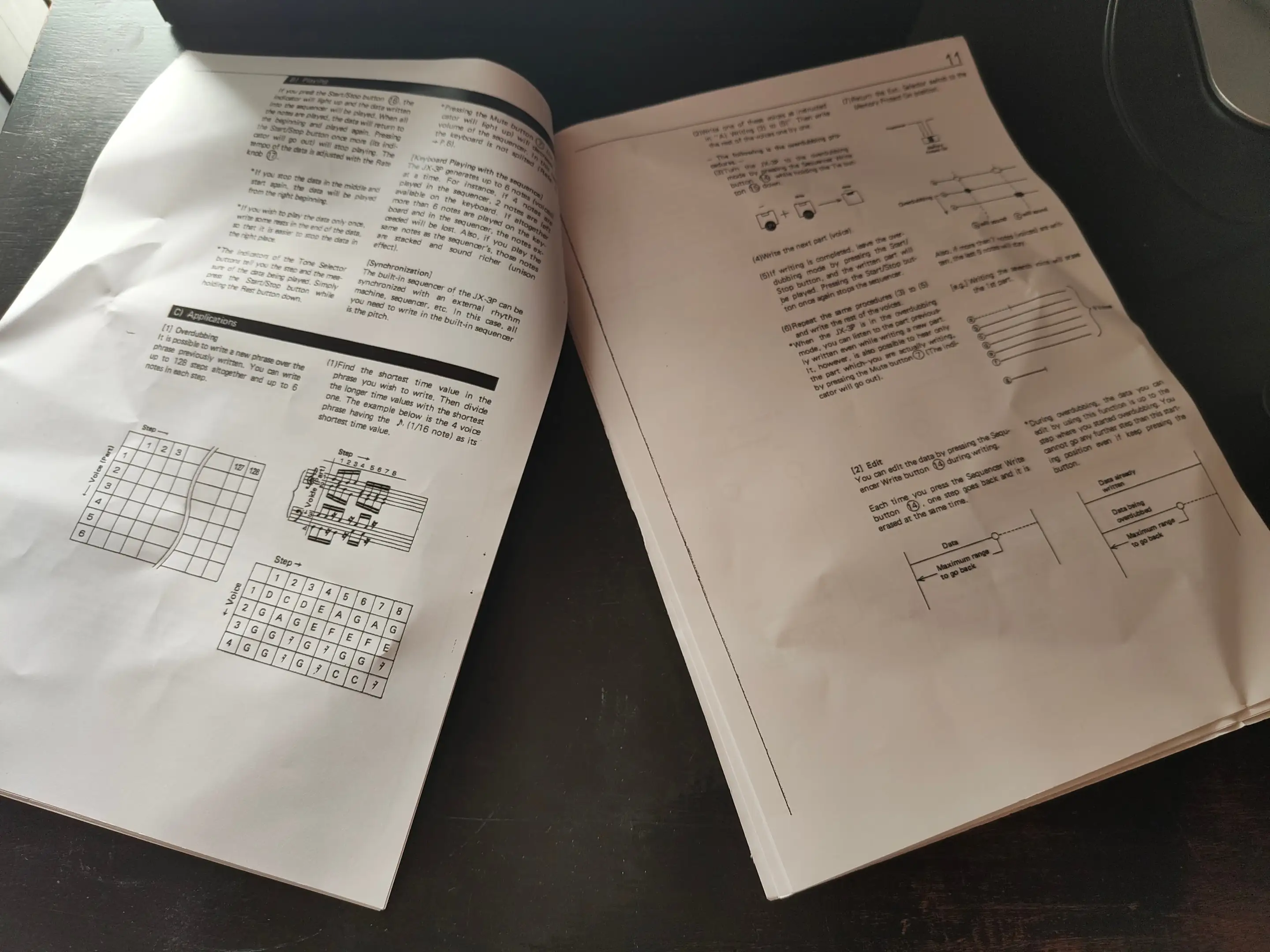
Once you choose your synth, it's time to learn everything about it. And with everything, I mean everything .
The potential most synthesizers have is unbelievable, and the best producers are the ones who can make the most of their instrument, whichever it is.
The picture above shows the instructions for my PG-200 synth. I went through the manual in two weeks when I first got the synth, and I still check it regularly. You don't have to go full old school like me: there are YouTube tutorials for virtually all analog and VST synths.
Regardless of your method, make sure you take your time to master your new musical instrument. It has the power to take your music production to a whole new level, so long as you learn all of its nuts and bolts.
Presets and Templates
Many digital and virtual synthesizers come with a wide range of presets and templates that can be incredibly useful, especially if you're just getting started.
These presets and templates are sounds already designed and ready to be used, giving you an introduction to your new synth and also helping you find inspiration for your compositions. Especially with VSTs, if you look into your preset library, you might discover dozens of tones and textures you can build upon and customize to your liking.
In most DAWs, template patches offer pre-configured settings tailored to specific genres or musical styles, which can save you plenty of time and stress when creating a new track.
My recommendation is to use presets and templates to get started and explore your instrument. Once you feel ready, start making the most of the customization options of your instruments, in order to create a sound signature that's uniquely yours, and not carefully crafted to suit everyone's needs.
Make it Unique with Effects
You'll soon realize that synthesizer-generated sounds tend to be cold and artificial compared to acoustic instruments. Great music producers are those that can seamlessly blend the analog and the virtual using effects design to make the soundstage consistent and pleasant.
When you create a sound, you can apply various effects such as reverb, delay, and chorus, to add depth, movement, and spatial characteristics to your sounds.
Play with different settings and parameters to create unique effects and enhance the characteristics of your synth. In addition to built-in effects, you can also use external effects processors and plugins to further shape and manipulate your synth sounds.
You'll see that this can provide an endless range of creative possibilities and allow you to craft truly original sonic textures.
The power of MIDI
If you use a virtual synth, MIDI mapping and sequencing are how you control your instrument, so you must ensure all the keys and knobs are properly mapped and that latency is as low as possible. Even if you use an analog or digital synthesizer, MIDI sequencing can come in handy. You can use it to control how the effects evolve over time, which will further broaden your sonic palette.
All in all, MIDI can give you more sounds and effects to work with, offering more ways to get creative with your new instrument and also simplifying your workflow considerably.
Layer Sounds
Creating an impactful soundscape is no trivial task, and neither is creating a catchy synth melody that doesn't sound like a dozen others. When composing with a synth, multi-layering can help you create richer songs, and sounds that don't sound like anything else.
When working with a DAW and a VST plugin, layering sounds is duck soup. Many digital synths offer the option to overwrite melodies and add layers of sounds. Alternatively, a simple looper pedal can make your composition process much faster and smoother.
Learn from Others
Generations of electronic pioneers came before you, so why not learn (and copy) from them, so long as you use that knowledge to create your own sound?
Synthesizers offer an endless palette of sounds and textures. You can create anything from cavernous EDM basslines to dreamy ambient pads, retro synthwave with nostalgic arpeggios reminiscent of neon-soaked landscapes of the 1980s, or cinematic soundscapes where the sonic possibilities are limited only by your imagination. In short: see how others used your synth, and use their work as the foundation for your sound.
Another tip is to check how to create certain sounds that'll make your song sound "in line" with the genre you're working on.
Struggling to nail the distinct risers and drops of EDM or create captivating ambient soundscapes for meditation and stress relief? There are countless tutorials online that provide step-by-step guides and expert tips to create something that'll resonate with your audience. Not only that: it'll also allow you to make the best possible music even when you're venturing outside of your genre of preference.
Finally, never underestimate the importance of community.
Sharing your latest tracks on Soundcloud or TikTok, joining online forums and communities, or immersing yourself in music production workshops and seminars: each process encourages you to engage with like-minded artists, and share your artistry with people who might be able to give you valuable feedback. Plus, collaborative environments can inspire you and nurture your creativity, so I highly recommend you join others who are exploring the depth and beauty of music synthesis.
Never Give Up
In general, acoustic instruments seem more "approachable". You strike a chord or press a key and know approximately the sound that'll come out of your instrument. On the other hand, the world of music synthesis is filled with unpredictability and random and unexpected sounds. While for many this is an exciting feature offered by these electronic instruments, other musicians feel this uncertain factor makes composition more problematic or recording more troublesome.
Synthesizers are not easy to master. They require dedication and curiosity that goes beyond the love for music: you also need to be tech-savvy, and willing to delve deep into the science behind sound design to make the most of your gear.
That said, adding a synth to your music workflow can enhance the depth, variety, and beauty of your music unlike any other instrument, as you can shape and customize its sound in countless ways to suit your compositions.
They might have a steeper learning curve than most instruments, but synths are fun to play, beautiful to explore in all their features, and offer an immense sonic palette to elevate your tracks. So, don't give up!
Final Thoughts
And that’s all I know about synths! I hope this guide will help you make your first step into the fascinating world of synthesis. As you can see, mastering a synthesizer can elevate your music production skills and add a unique touch to your music.
Whether you choose a modular, digital, or VST synth, make sure you invest the time necessary to explore the potential of your musical instrument. Learn from others using the same synth, but also try to find a sound signature that’ll make your tunes stand out.
Good luck, and stay creative!


